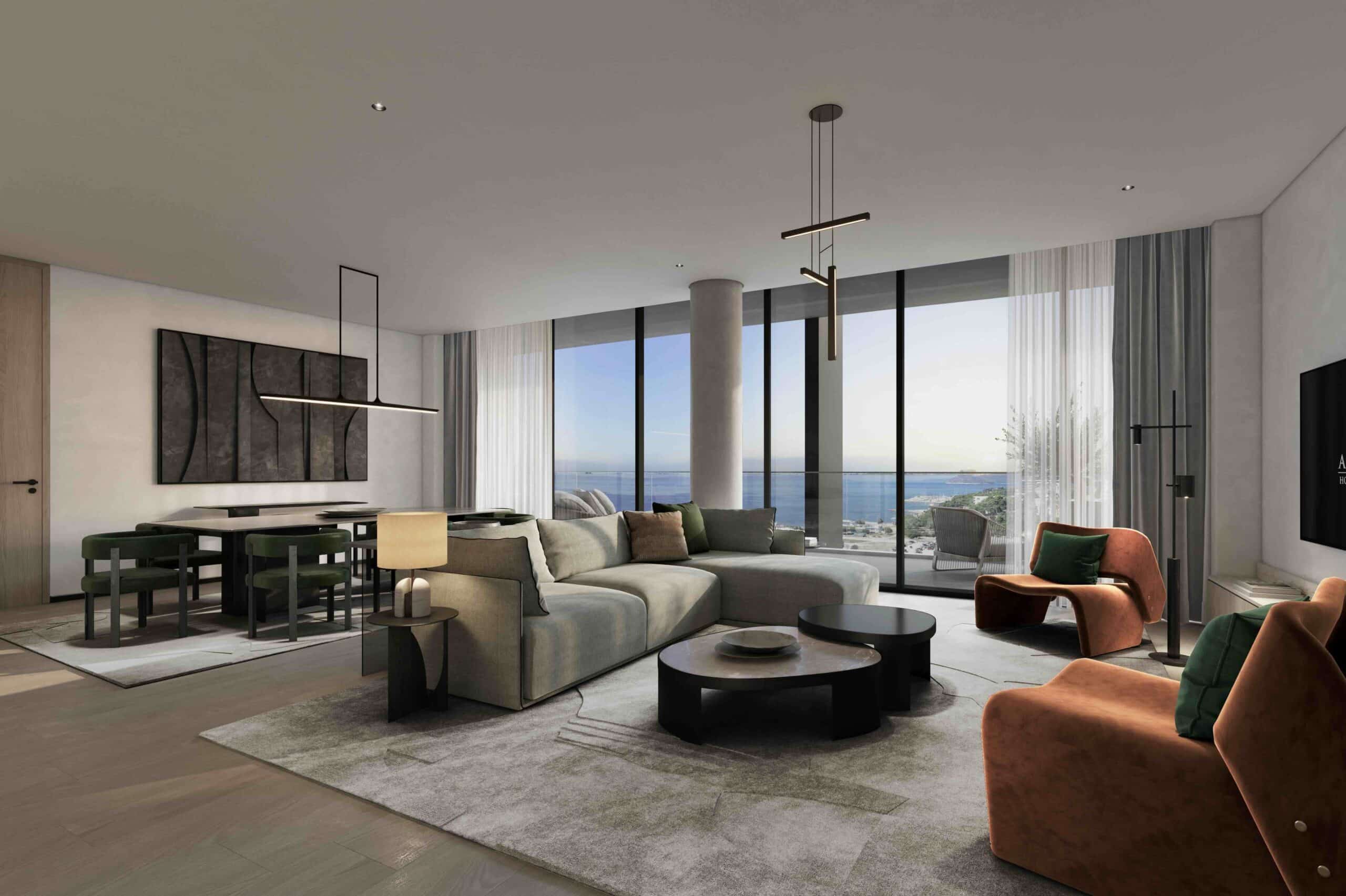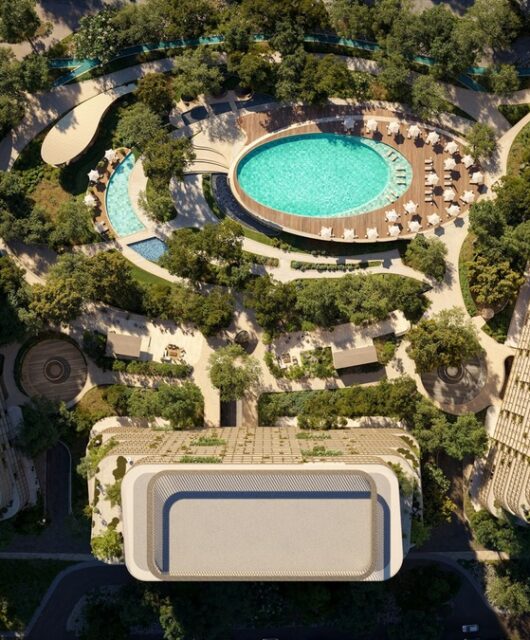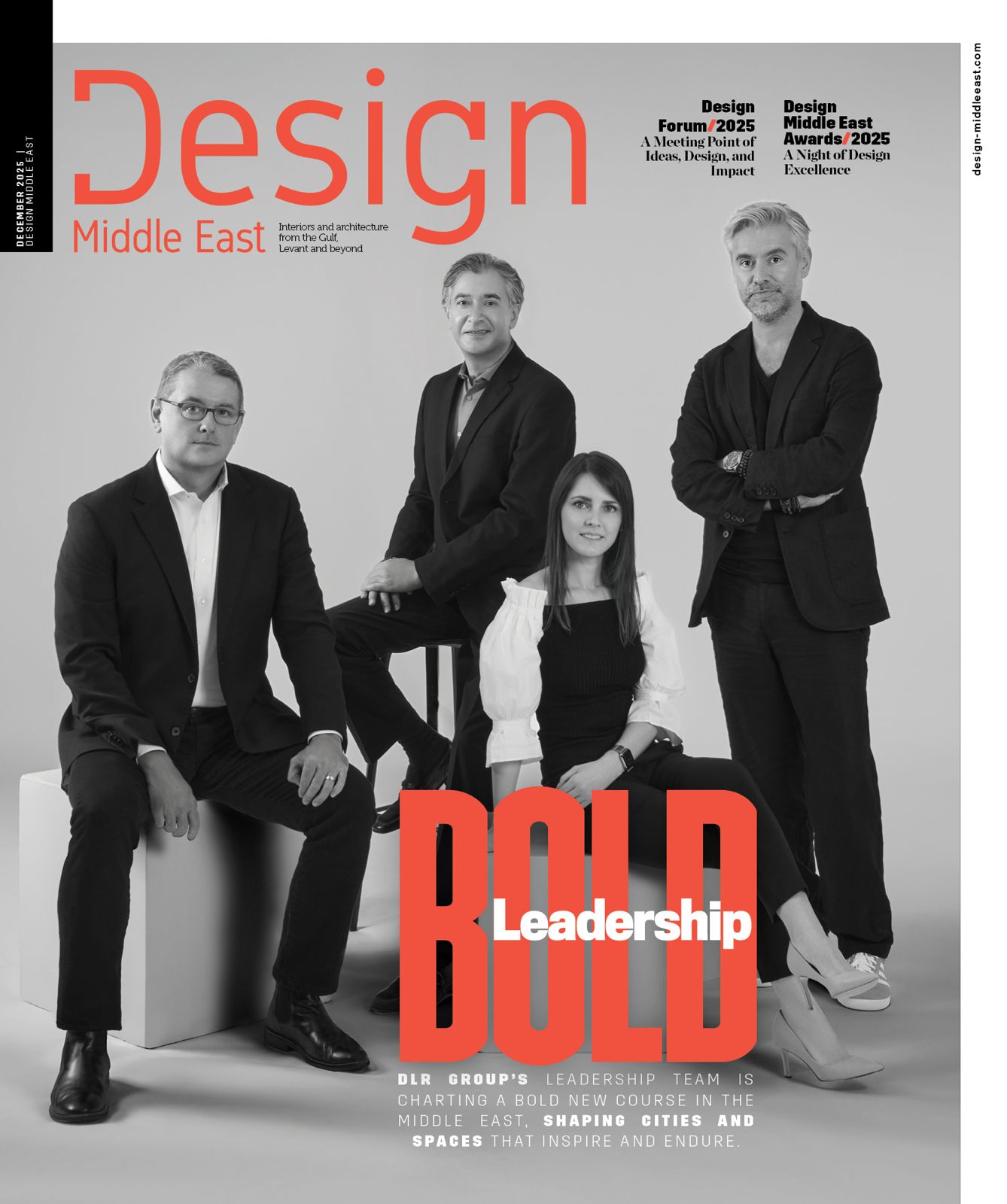
Elie Mrad, Chief Architectural Officer at Arada, shares insights into the design philosophy behind Anantara Sharjah Resort and Residences, emphasising the integration of natural elements and sustainable practices to create a unique and immersive experience.
Can you share with us the inspirations and initial ideas that shaped the vision for Anantara Residences?
Anantara Sharjah Resort and Residences is situated on reclaimed land with captivating sea views. This context inspired the design, which aims to create a site-responsive and conceptually innovative space. A prominent, superimposed line tracing the sun’s path carves the site, resulting in two distinct building masses unified by a holistic visual language. The sun shines through the void between these masses and functionally separates the building into a hotel and apartments, each enjoying unobstructed sea vistas.
What were the primary goals or themes you aimed to achieve with this project?
Central to the architecture of the Anantara Sharjah Resort and Residences is its design that prioritise the visitor’s experiential journey, emphasising arrival and departure as one does on a voyage. The space between the building’s two masses evokes a sense of compression followed by release, contributing to a memorable experience. Social interaction is amplified by outdoor gathering spaces that are surrounded by holistic and scenic water features.
How did you integrate elements like light, space, and nature into the design of Anantara Residences?
Light, space, and nature have always been a central part of my design process. The sun’s movement is a key spatial structure element, with its rising and setting visible through the central void, creating a euphony between the building’s geometry and the sky.
The space between the compressive walls between the masses channels a sea breeze, enhancing connection with the natural environment. And so, nature has been extended in the interplay of space, natural elements, shadows, and breezes.
In each project, there is one, and only one, unforgettable spatial experience, and in the case of the Anantara Sharjah Resort and Residences, it is this ‘drop-off’ experience. Whether it is the building’s visitors, hotel guests, or staff, the design is universally appealing and considers the working conditions of employees to create an enjoyable architectural experience.
Were there any cultural or regional influences that influenced the design choices?

When the design is one that is responsive to the regional light, air, and water, this may be considered a design outcome for the region. The local context informs the architecture’s qualities and physical space, fostering a tactile and sensory experience with intangible elements. The unique drop-off exemplifies the cultural and regional influences by interconnecting space, nature, light, and shadow.
Cultural and regional influences are also visible when exploring the spatial interior, through a careful selection of the color palette, as well as different chosen artworks.
What eco-friendly practices and materials were employed in the construction of Anantara Residences?
Anantara Sharjah Resort and Residences embraces eco-friendly practices and materials at various scales. GRC cladding provides heat insulation by isolating internal walls; a chiller system enables energy-efficient cooling; each room has energy-saving LED lighting; and natural gas is used for cooking to save on electricity.
In the external architectural landscape, an emphasis was placed on the planted vegetation to allow for pockets of shaded spaces.
How important was sustainability in shaping the overall design philosophy of the project?
Sustainable practices are an integral part of our design process. The building’s orientation maximises natural light and ventilation, particularly about window placement on the North façade, which also helps to reduce energy consumption. Green patches in the landscape create a natural air filtration system, while outdoor spaces promote social sustainability by fostering healthier living.
What were some of the major challenges you faced during the development of Anantara Residences, and how did you overcome them?
Many challenges presented themselves during the design and construction of Anantara Sharjah Resort and Residences but, these challenges made the process of development even more interesting. The challenges were varied, whether in terms of construction, approvals, spatial arrangements or in considering the site’s natural conditions. One of the challenges includes the separation of the two masses, which allows for a clear distinction in the building’s program between hotels and serviced apartments. While this was a clear positive in some respects, in others it posed an architectural challenge, and there was close coordination with the operator to ensure proper execution. Another challenge included explorations of the sea’s tide levels, in which a new typology of the infinite water bridge was to be introduced. The outcome became a pathway that encourages people to exploratively walk into the water, and phenomenologically interact with it.
How does this project reflect Arada’s broader vision and mission in the architectural landscape?
One of Arada’s visions is to create distinguished destinations, whether through something as substantial as a master plan, something as simple as a chair in a kindergarten school, or indeed the Anantara Sharjah Resort and Residences. Throughout its life cycle, each project showcases meticulous attention to detail in architecture, design, interior, and landscape. It embodies Arada’s ethos of developing projects from design to delivery, celebrating the harmony of architecture and landscape while prioritising the user experience. The emphasis on a designed and integrated external landscape, coupled with conceptual architectural elements and the acknowledgment of site and context, exemplifies this project as part of Arada’s architectural vision.







